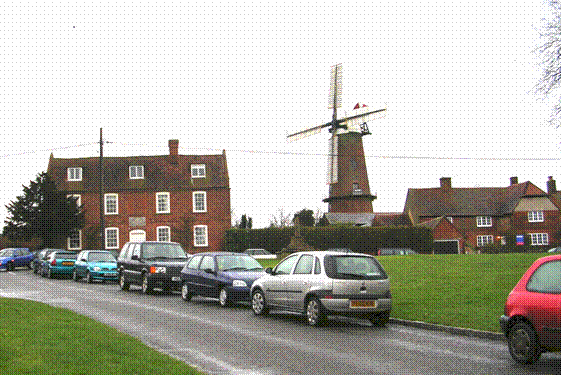
Quainton Windmill
Encyclopedia

Windmill
A windmill is a machine which converts the energy of wind into rotational energy by means of vanes called sails or blades. Originally windmills were developed for milling grain for food production. In the course of history the windmill was adapted to many other industrial uses. An important...
in the village of Quainton
Quainton
Quainton is a village and civil parish in Aylesbury Vale district in Buckinghamshire, England, north west of Aylesbury. The population is 1290, of which 1000 are adults. The village has two churches , a school and two public houses...
, Buckinghamshire
Buckinghamshire
Buckinghamshire is a ceremonial and non-metropolitan home county in South East England. The county town is Aylesbury, the largest town in the ceremonial county is Milton Keynes and largest town in the non-metropolitan county is High Wycombe....
, England
England
England is a country that is part of the United Kingdom. It shares land borders with Scotland to the north and Wales to the west; the Irish Sea is to the north west, the Celtic Sea to the south west, with the North Sea to the east and the English Channel to the south separating it from continental...
.
The 70 ft (20m) six-storey brick tower mill
Tower mill
A tower mill is a type of windmill which consists of a brick or stone tower, on top of which sits a roof or cap which can be turned to bring the sails into the wind....
, built 1830–32, is one of the most visible buildings in the village. It was derelict for most of the 20th century it has now been restored and can grind wheat into flour. The windmill was built by James Anstiss and it is still owned by the Anstiss family. It is the tallest windmill in Buckinghamshire.
The mill had a steam engine
Steam engine
A steam engine is a heat engine that performs mechanical work using steam as its working fluid.Steam engines are external combustion engines, where the working fluid is separate from the combustion products. Non-combustion heat sources such as solar power, nuclear power or geothermal energy may be...
installed early in its working life. Until 1881, it was wind-driven, but milling came to an end in 1900. The building remained unused as a mill, without a cap or sails, until 1974, when the owner formed the Quainton Windmill Society, with the aim of restoring the windmill. The Society spent 23 years undertaking restoration work. In 1997, milling was re-established.
Further reading
- A. C. Smith, Windmills in Buckinghamshire and Oxfordshire. Stevenage Museum Publications, 1976.

